©VILT / Jerom Rozendaal
When Belgium went into lockdown in March, Drieghe Azalea barely panicked. The plants could go into the cold storage to inhibit flowering and direct sales were scaled up rapidly. All in all, this corona year has been a good year. The growers see a bright future and the market for azaleas is on the rise.
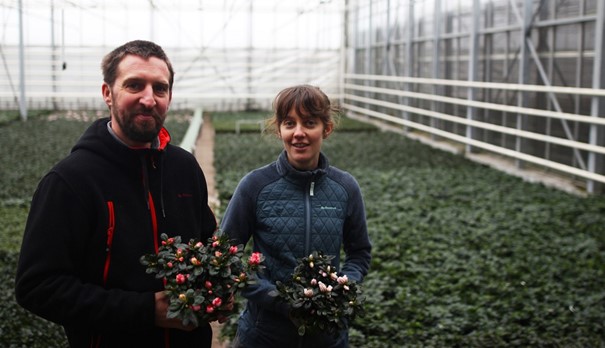
Can you turn to Ellen Mallems and Jeroen Drieghe of Drieghe Azalea for a course in crisis management in the horticultural sector? The couple themselves don’t think so. “We did what was logical. And we’d do the same in a flash. We were lucky that in March a large part of our production had already been sold,” Jeroen Drieghe explains.
Corona hit like a bomb, just as it did for many ornamental growers. “Immediately after the lockdown we were stumbling around in the dark. Of course it had never happened before so we didn’t know what to do”, says Jeroen, who took over the company from his father in 2008. After a week, when the dust had settled, the grower jumped in. Since sales dropped to nothing when the shops and borders closed, he decided to inhibit the flowering of the azaleas.
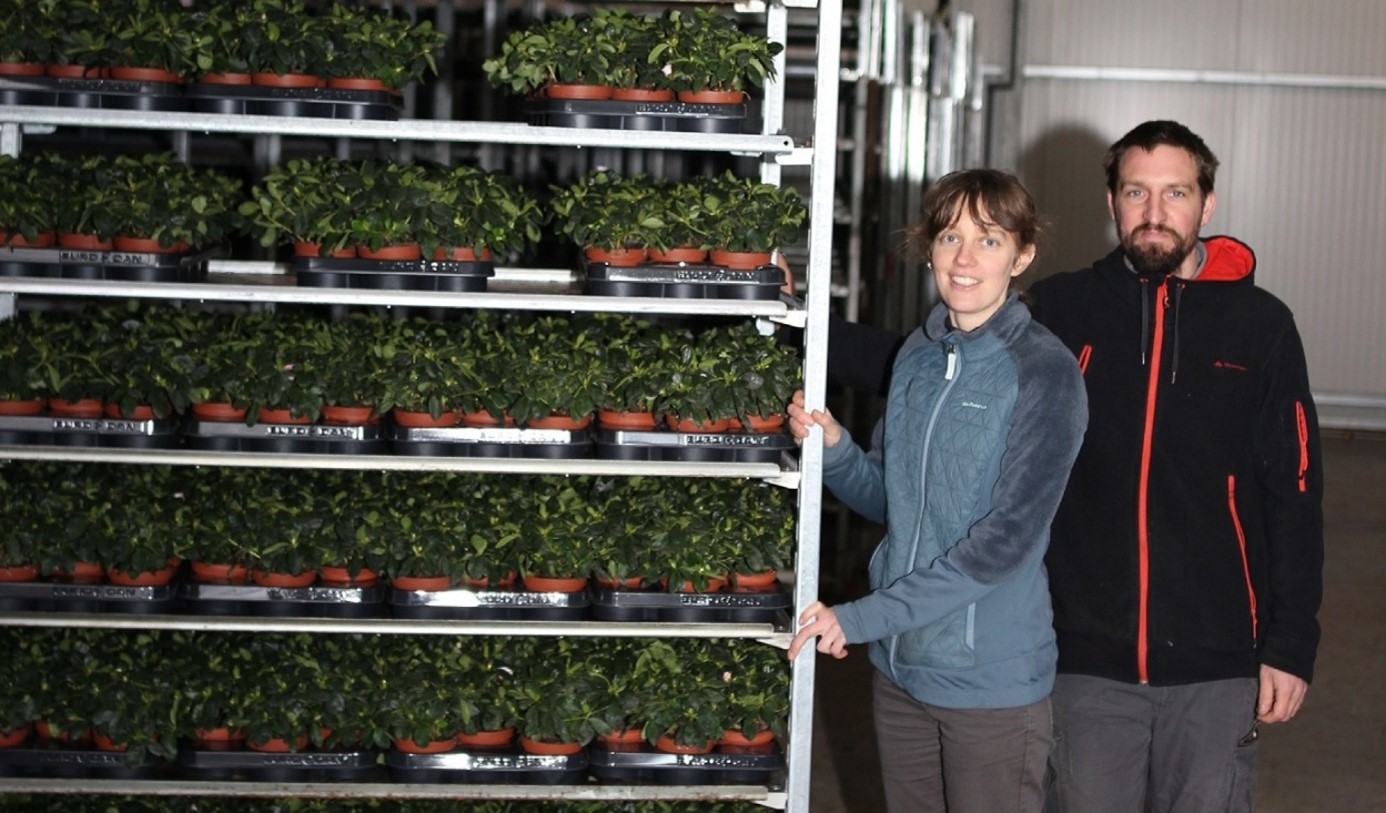
At the start of the lockdown in March, the cold store was filled with green containers that housed the azaleas for six weeks
Inhibiting the flowering process
Inhibiting flowering is commonplace. In fact, it’s part of the business model of azalea growers. By putting plants into cold storage, they are lulled into dormancy. The reverse strategy is to wake azaleas from their natural dormancy using artificial heating and light. The latter is called forcing. Thanks to both methods and working with early and late flowering types of azaleas, there are flowering plants from August to May.
“Plants can stay in the cold store for up to two months,” Jeroen explains why they didn’t panic. “We only ran a risk with the azaleas that were just starting to flower. If they start to show colour, they need to be sold within two weeks, otherwise we have to dump them.” Ellen came up with a solution for this acute business issue. “We just upped a few gears with direct sales combined with home delivery,” she explains.
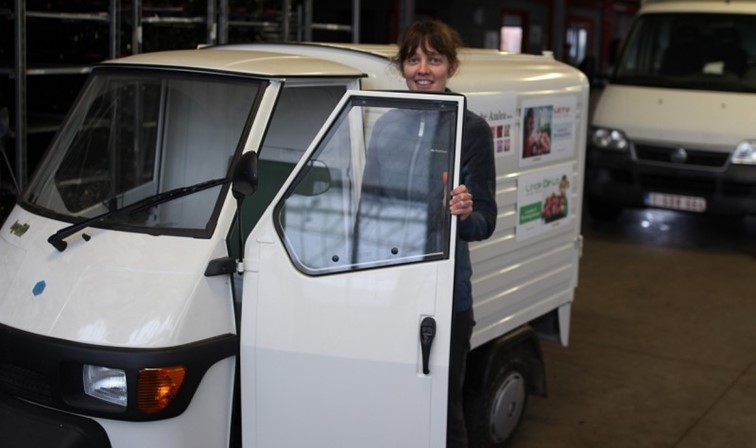
Ellen is responsible for direct sales and made home deliveries during the first lockdown
Explosion in direct sales
Two years earlier, Ellen had already created a website for the company, smoothing the transition to online direct sales. “I generated a lot of publicity on Facebook to reach new customers. Facebook became part of my life. Messages were shared en masse, making our online sales channel increasingly well-known. And the video of us on PlattelandsTv also helped to promote greater brand awareness.”
In the months of March and April, Ellen visited over 300 addresses in East Flanders. “There was an enormous feeling of solidarity; people wanted to offer each other support with flowers. I delivered a lot of flowers to people that were a gift from someone else. Many companies also sent their employees flowers during the lockdown to thank them.”
Ellen especially looks back on that busy period with satisfaction. “It was really hectic. Short-chain sales and home delivery require a great deal more time and preparation, but were a lot of fun to do.” For once the roles at the company were reversed: whilst Ellen was on the road to deliver flowers, Jeroen was at home with the kids. “Once the plants are in the cold store there’s not a lot of work left to do,” he explains.
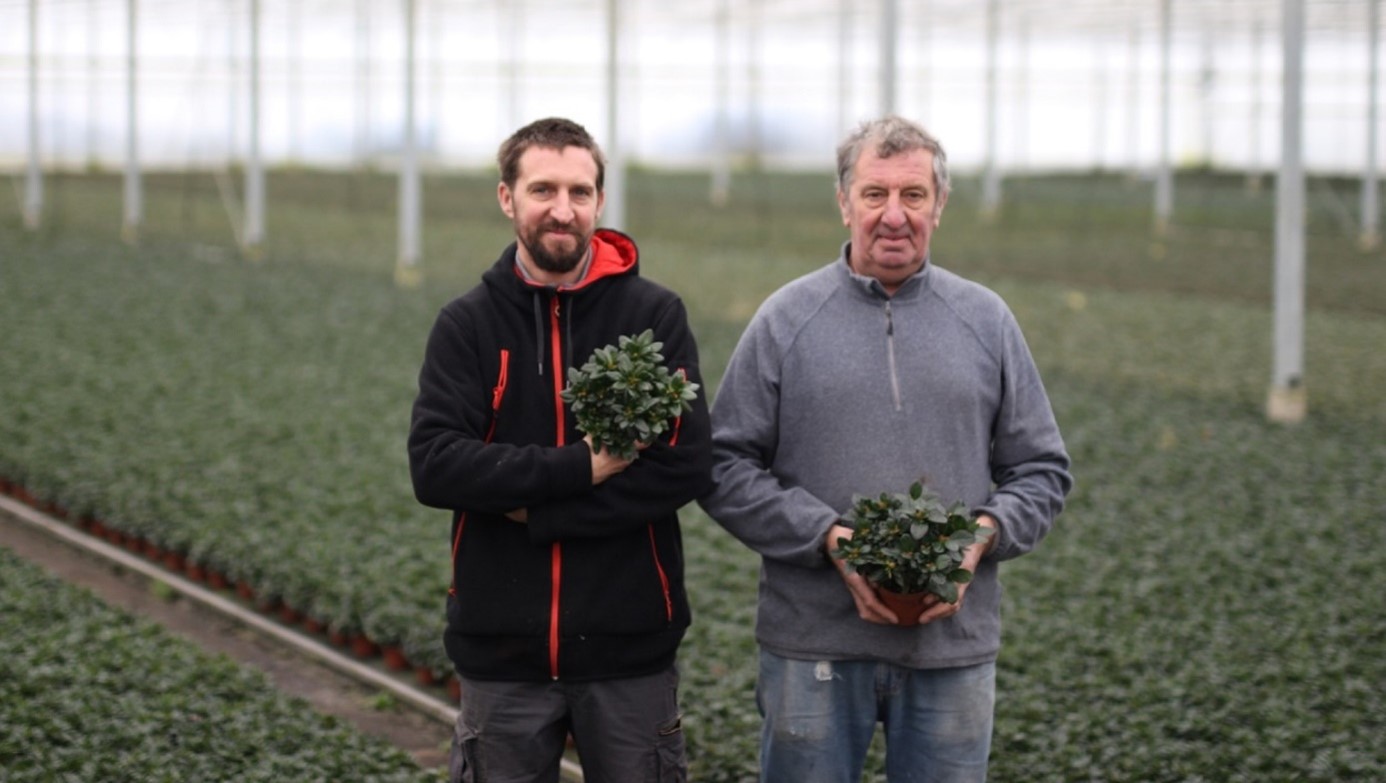
In 2018, Jeroen took over the company from his father, Marc. Marc can still be found at the company every day, offering support
Corona as a turning point
In December 2020 the growers’ lives slowly returned to normal. Direct sales (now to order due to corona) are on the back burner again, although the volume is definitely higher than before the pandemic. For some customers, placing an order or making an appointment is a threshold. But in a few months’ time, when the corona measures are decreased again, Ellen wants to resume the monthly door-to-door sales.
Despite – or perhaps thanks to – the corona crisis, the couple looks back at the 2019-2020 season with satisfaction. Six weeks after the lockdown, trade started up again and two weeks later all the plants from the cold store had been sold. “All in all, we finished the year well compared to last year,” says Jeroen.
The couple feels that corona might be a turning point for the azalea. “The plant had a somewhat old-fashioned image, especially in Belgium, but corona has generated new interest,” according to Ellen. “I received photos from customers who were completely fascinated by the buds opening. Thanks to corona, people had time to enjoy plants, something they barely had in normal life.”
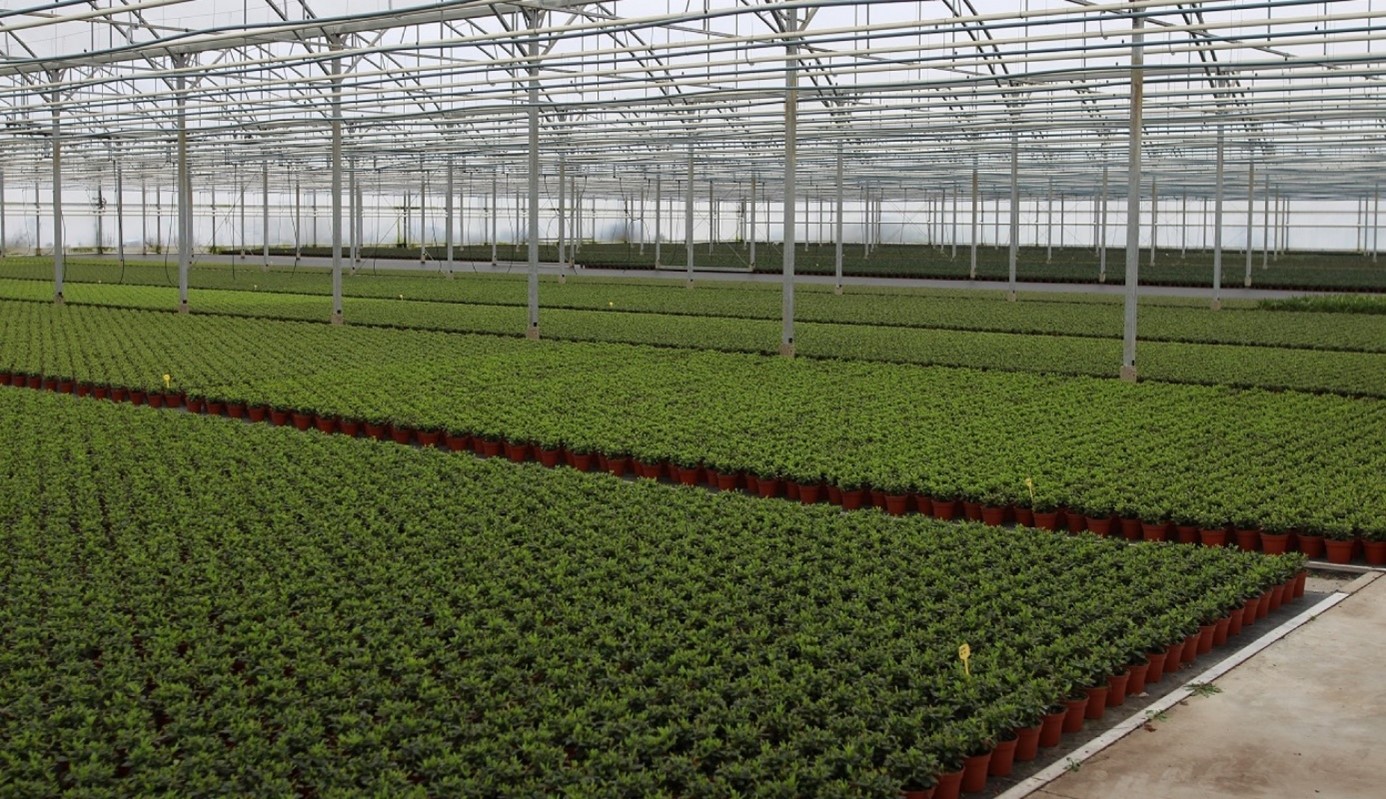
The film greenhouse was constructed three years ago. It houses the plants for next season, 2021-2022
Comeback azalea
According to Jeroen, the recovery of the azalea market was already on the horizon last year. Once, the region around Ghent was the epicentre of the flourishing cultivation of azaleas in Europe. And it still is, except that the sale of azalea plants has dropped dramatically. In the nineteen eighties, the European market still represented 90 million plants and over half of those came from Ghent and the surrounding area. Now, European production is estimated at 25 to 30 million and East Flanders is the leading supplier. According to official figures, the number of azalea growers in Belgium has fallen from 481 in 1980 to 133 in 2010 and 74 in 2018.
As Drieghe Azalea does not use external workers, the company has lower costs so that it was able to keep its head above water even during the crisis, says Jeroen. He also notes that an increasing number of azalea growers are stopping or switching to another crop. “In 2020 alone, there is 10% less production than in 2019,” he says. The sharp fall in supply means the sector has suddenly become a demand market, leading to better prices. The ILVO research institute previously observed that the crisis in azalea production seems to be over.
Linde de Lo
The couple sees a bright future. It’s not without reason that three years ago they invested in an 8000 m2 film greenhouse that now houses the production plants for next season. “Ventilation is better in the film greenhouse so that the plants grow stronger. In the past, the plants were in the same place, but outside, so we had to bring them inside in case of night frost. That wasn’t very practical,” says Jeroen. Although production is unheated, the indoor plants do not withstand frost.
Jeroen and Ellen have about thirty different types of azaleas in 2.5 hectares of greenhouses, so that they can offer a good spread of flowering periods. A popular cultivar is the Linde de Lo, named after their daughter. The plant that flowers at Christmas time (when Linde has her birthday), is the product of the breeding hobby that father Marc and Jeroen share. “Twenty percent of our azaleas come from own varieties that are also cultivated by other growers,” says Jeroen.
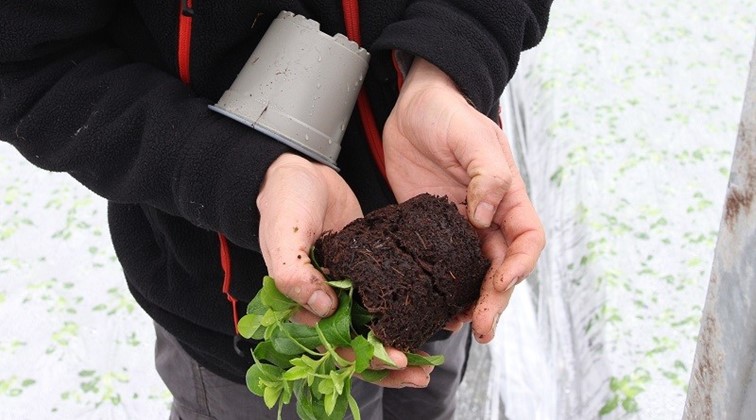
Cuttings under film, so that the heat is retained better, are beginning to shoot roots
Recycling run-off water
The next major step for the company is the installation of water recycling system; the conversion work is planned for next year. “The residues are filtered out here so that we can reuse the water and remove the waste substances in a sustainable way,” Jeroen explains. At the moment the run-off is still sprayed over arable land, which is permitted by law. “But it may not still be permitted in six years’ time,” says the grower who wants to be ahead of the game by then.
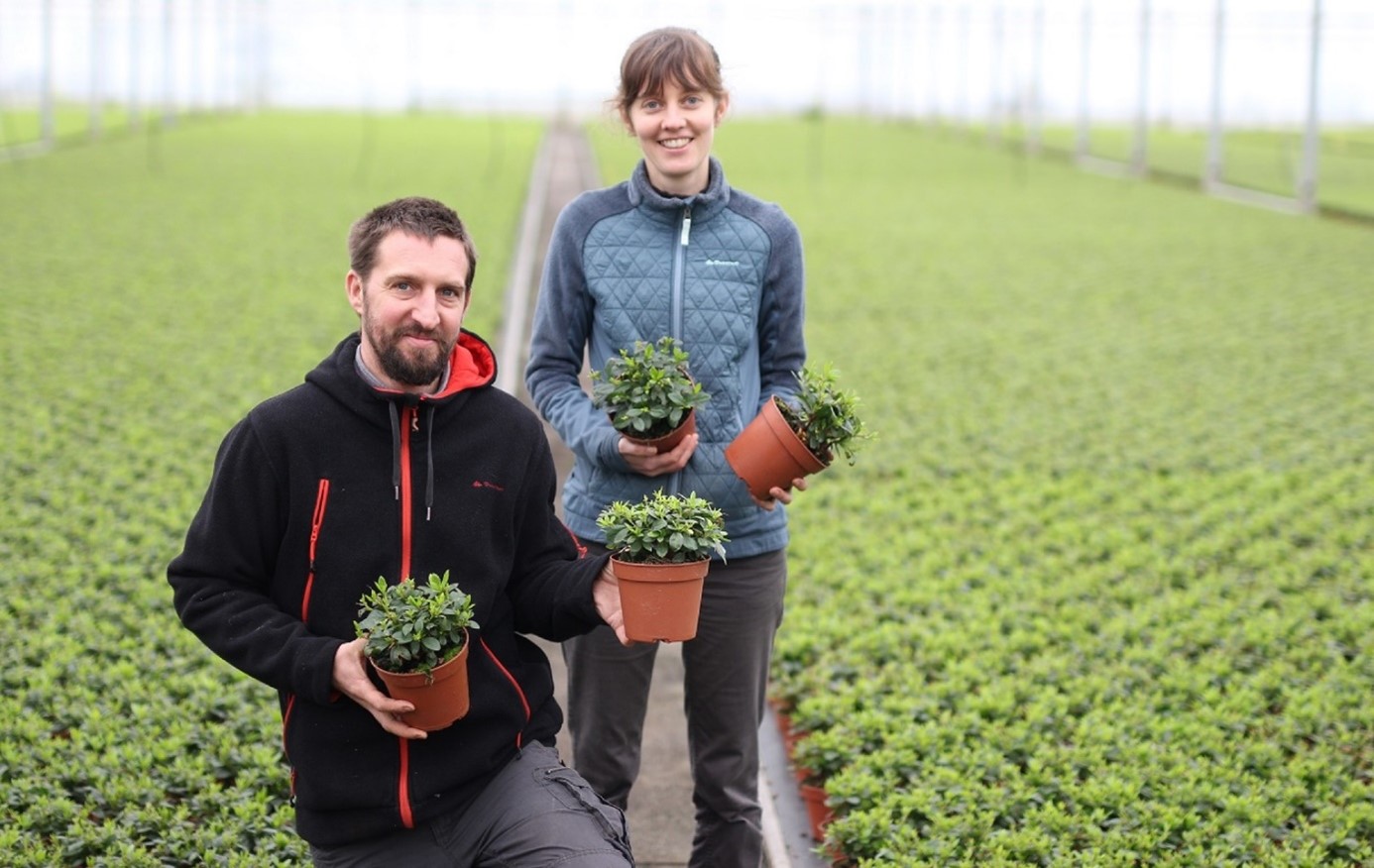
Jeroen and Ellen see a bright future
During our visit, the first section of the greenhouse is filled with cuttings. After cutting, the plants are placed under film so that they can better retain heat and water and can root faster. Jeroen explains that he applies almost the same cultivation programme every year to produce the same volumes of the same varieties. “customers know where to find us for these products.”
The only aftermath of corona for Drieghe Azalea until now, is the lack of early contracts. “Some dealers secured a certain batch for a certain period a year in advance. These orders are not being placed due to fear of corona.” However, the grower assumes that his plants will find their way to consumers next too. “What could be worse than that first lockdown?” he wonders.

